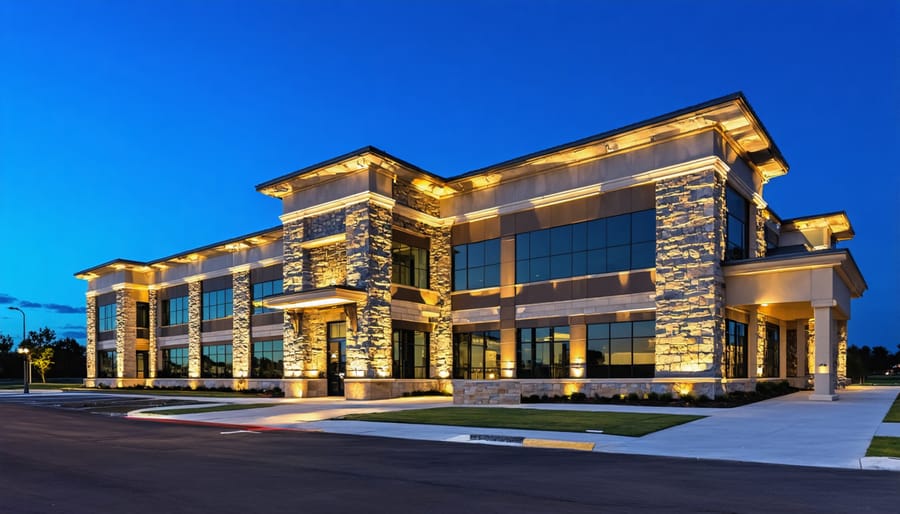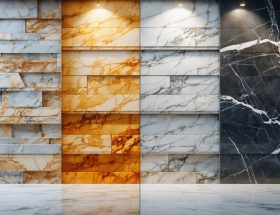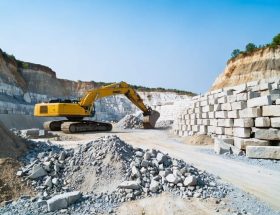Commercial stone veneer transforms ordinary building facades into stunning architectural statements while delivering remarkable durability at a fraction of natural stone’s cost. This innovative cladding solution has revolutionized commercial construction, offering architects and developers the perfect blend of aesthetics and practicality.
Modern manufacturing techniques have elevated stone veneer beyond simple imitation, creating products that rival the authenticity of quarried stone while providing superior installation flexibility and structural advantages. From retail storefronts to corporate headquarters, stone veneer systems deliver the prestigious look of natural stone with enhanced performance characteristics including better weather resistance, simplified maintenance, and reduced structural load requirements.
As sustainability and cost-efficiency become increasingly critical in commercial construction, stone veneer emerges as a sophisticated solution that balances visual impact with practical considerations. Its versatility accommodates both contemporary and traditional architectural styles, while its modular nature streamlines installation and reduces project timelines. For decision-makers seeking to maximize aesthetic value while optimizing construction budgets, commercial stone veneer represents an intelligent investment in both form and function.
What Makes Commercial Stone Veneer Different?
Durability Requirements
Commercial stone veneer must meet rigorous durability standards to withstand heavy foot traffic, environmental stressors, and frequent cleaning in business settings. The material should achieve a minimum compressive strength of 1,800 PSI and demonstrate resistance to freeze-thaw cycles, particularly in regions with extreme temperature variations.
For exterior applications, commercial stone veneer requires enhanced water resistance properties with a maximum absorption rate of 7.5%. The material should also feature UV-stable pigments and colorants to prevent fading or discoloration from prolonged sun exposure. Impact resistance is crucial, especially in high-traffic areas like storefronts and building entrances.
Quality commercial installations incorporate moisture management systems, including proper drainage planes and vapor barriers. The veneer must maintain structural integrity when exposed to de-icing salts, acid rain, and other environmental pollutants common in urban settings. A properly installed commercial stone veneer system should have a minimum expected lifespan of 50 years with appropriate maintenance.
Manufacturers typically provide specific durability ratings and testing certifications to verify compliance with ASTM standards for commercial applications. These certifications ensure the veneer meets building code requirements and performance expectations for commercial properties.
Commercial Installation Standards
Commercial stone veneer installations must adhere to strict building codes and industry standards to ensure safety and longevity. These projects typically require more rigorous specifications than residential applications, particularly regarding structural support and weatherproofing. Professional contractors must follow specific stone veneer installation techniques that include proper substrate preparation, waterproofing, and reinforcement.
Key requirements include installing a minimum 15-pound felt moisture barrier, galvanized metal lath secured with corrosion-resistant fasteners, and maintaining consistent mortar thickness between 1/2 to 1 inch. Commercial installations also demand careful attention to expansion joints, typically required every 144 square feet or at 12-foot intervals, whichever is less.
For multi-story applications, structural engineers must verify load-bearing capacity and specify appropriate support systems. Climate considerations play a crucial role, with freeze-thaw cycles requiring additional protective measures in cold regions. Documentation of installation procedures and materials used is essential for warranty purposes and building code compliance.
Design Applications in Commercial Spaces
Facades and Entryways
Stone veneer can transform commercial building exteriors into striking architectural statements while adhering to principles of sustainable commercial stone design. For facades, modern installations often feature a mix of textures and patterns, creating visual interest through stacked stone, ashlar, or random layouts. Popular choices include limestone and granite veneers for their durability and timeless appeal.
Entryways deserve special attention as they set the tone for the entire building. Consider incorporating stone veneer columns, archways, or accent walls that draw visitors toward the entrance. Multi-story installations can use varying stone colors or patterns to break up large wall spaces and create distinctive visual layers.
For maximum impact, combine stone veneer with complementary materials like glass, steel, or wood. LED lighting can enhance stone textures after dark, while water features integrated into stone-clad entrance areas create welcoming atmospheres. Weather protection elements like overhangs can be seamlessly incorporated into stone veneer designs, ensuring both aesthetics and functionality.
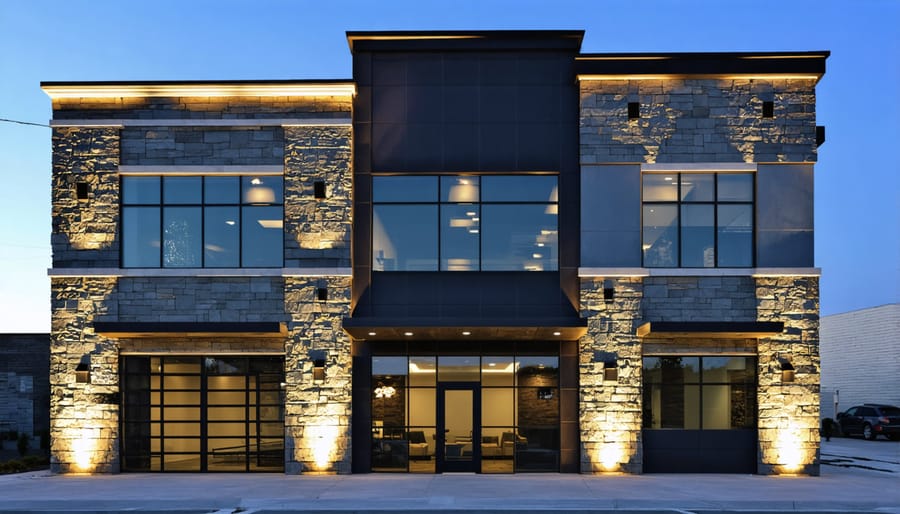
Outdoor Seating Areas
Commercial stone veneer transforms outdoor seating areas into inviting spaces that combine natural aesthetics with durability. Restaurant patios featuring stone veneer create warm, rustic atmospheres that enhance the dining experience while withstanding heavy foot traffic and various weather conditions. The material’s versatility allows for creative design elements, from accent walls and pillars to built-in seating arrangements and outdoor fireplaces.
In public gathering spaces, stone veneer provides an elegant backdrop for social interaction while requiring minimal maintenance. Popular applications include wraparound bench seating, planter boxes, and decorative privacy walls. The material’s natural insulating properties help moderate temperature fluctuations, making outdoor spaces more comfortable throughout the seasons.
When designing outdoor commercial spaces, it’s crucial to select stone veneer patterns and colors that complement the surrounding architecture and landscape. Mediterranean-inspired venues often opt for light, warm-toned stones, while modern urban settings may favor sleek, gray varieties. The material’s weather resistance and color stability ensure these outdoor installations maintain their appeal for years, making them a cost-effective choice for commercial properties.
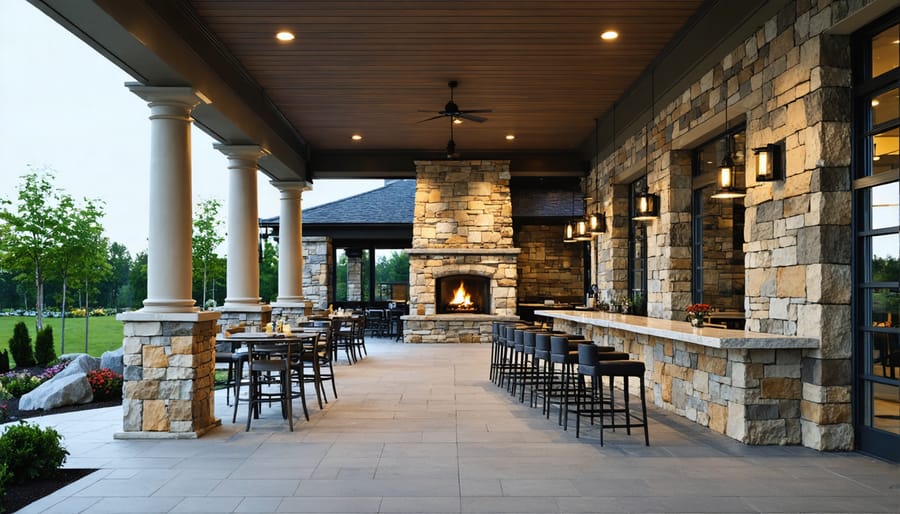
Landscape Features
Commercial stone veneer transforms outdoor spaces with elegant and durable landscape features. In retaining walls, it provides both structural support and aesthetic appeal, creating visually striking terraced designs that complement commercial properties. These walls can range from low decorative borders to substantial grade-change solutions, all while maintaining a cohesive architectural appearance.
Custom planters faced with stone veneer offer versatile design options for corporate entrances, courtyards, and rooftop gardens. The material’s adaptability allows for seamless integration with existing stonework while providing excellent durability against weather exposure.
Water features enhanced with stone veneer create focal points that elevate commercial landscapes. From simple wall fountains to elaborate cascading waterfalls, the material’s natural appearance and texture add sophistication to these installations. The non-porous nature of properly sealed stone veneer makes it ideal for water features, ensuring longevity and minimal maintenance requirements.
Cost-Benefit Analysis
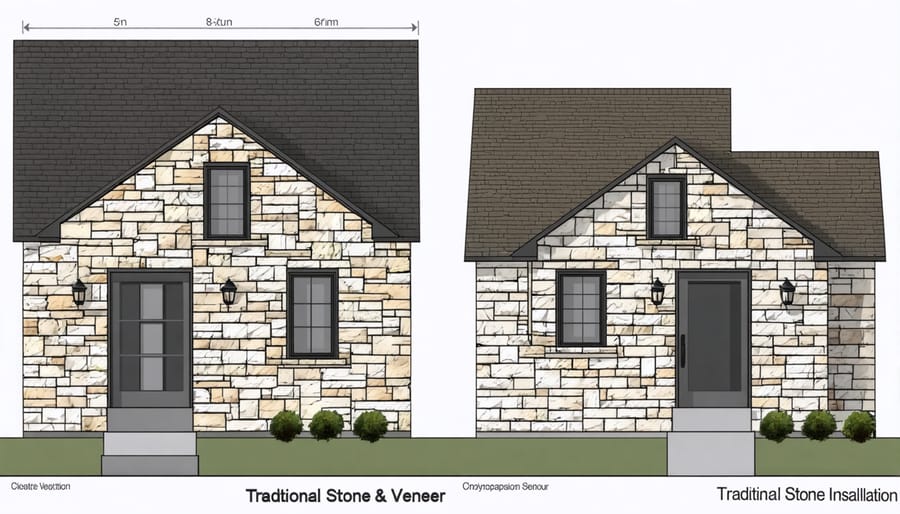
Initial Investment vs. Long-term Value
While commercial stone veneer requires a higher upfront investment compared to traditional siding materials, its long-term value proposition is compelling. Initial costs typically range from $20 to $50 per square foot installed, depending on the chosen material and complexity of the project. However, this investment often pays dividends through enhanced property value, reduced maintenance costs, and exceptional durability.
Studies show that commercial properties featuring stone veneer facades can command 6-10% higher rental rates and experience faster occupancy rates. The material’s 50+ year lifespan, coupled with minimal maintenance requirements, results in significantly lower life-cycle costs compared to alternatives like stucco or metal panels.
Consider also the energy efficiency benefits. Stone veneer provides additional insulation, potentially reducing heating and cooling costs by 8-12% annually. When factoring in durability, aesthetic appeal, and energy savings, the return on investment typically becomes apparent within 7-10 years of installation. For commercial property owners focused on long-term value creation, stone veneer represents a strategic investment that balances initial costs with sustained benefits.
Maintenance Requirements
Commercial stone veneer requires regular maintenance to preserve its appearance and structural integrity. Understanding proper maintenance and sealing requirements is crucial for long-term performance. Typically, annual inspections should be conducted to check for loose stones, deteriorating mortar joints, or water damage.
Basic maintenance includes regular cleaning with a mild, pH-neutral stone cleaner and soft-bristled brush to remove dirt and prevent staining. Pressure washing should be avoided or used with extreme caution, as excessive pressure can damage the veneer surface and compromise the mortar joints.
Resealing is recommended every 3-5 years, depending on exposure to weather elements and wear patterns. Professional resealing costs typically range from $2-$4 per square foot. Additional maintenance costs may include periodic mortar repair (approximately $5-$8 per linear foot) and occasional stone replacement for damaged pieces.
For commercial properties in harsh climates, more frequent maintenance may be necessary, particularly in areas with freeze-thaw cycles or high salt exposure. Establishing a regular maintenance schedule helps prevent costly repairs and extends the veneer’s lifespan.
Selecting the Right Stone Veneer
Climate Considerations
Climate plays a crucial role in selecting the appropriate stone veneer for commercial applications. Different weather conditions can significantly impact the durability and performance of stone veneer installations. In regions with frequent freeze-thaw cycles, it’s essential to choose materials rated for these conditions to prevent cracking and deterioration. Coastal areas require veneer products resistant to salt spray and high humidity, while desert locations need materials that can withstand intense UV exposure and extreme temperature fluctuations.
Moisture management is particularly important in areas with high rainfall. Proper drainage systems and moisture barriers must be incorporated into the installation design to prevent water damage and ensure longevity. Dark-colored stone veneers may experience more thermal expansion in hot climates, requiring appropriate joint spacing and expansion provisions.
For areas prone to severe weather events, impact-resistant varieties and enhanced attachment systems should be considered. The thickness and weight of the veneer also factor into climate considerations, as heavier options typically offer better thermal mass properties, potentially contributing to building energy efficiency.
Style and Color Selection
Selecting the right style and color of commercial stone veneer requires careful consideration of your building’s architectural design and surrounding environment. For modern commercial structures, opt for clean-lined stones in contemporary colors like sleek grays or warm beiges. Traditional buildings benefit from classic limestone looks or rustic fieldstone patterns that emphasize historical authenticity.
Consider your region’s architectural vernacular when making selections. Southwestern commercial properties often suit earth-toned veneers that mirror the natural landscape, while urban environments may call for sophisticated dark granites or polished slate appearances. The color should complement existing elements like roofing materials, window frames, and neighboring buildings.
Pay attention to stone size and pattern variation. Larger stones create bold statements suitable for grand commercial facades, while smaller stones work well for detail areas and accent walls. Mix different sizes and shapes to add visual interest, but maintain consistency in color tones to ensure a cohesive look.
Remember that lighting conditions will affect how the veneer appears throughout the day. Sample your selections under various lighting conditions and viewing distances before making a final decision.
Commercial stone veneer represents a versatile and valuable solution for modern architectural projects, offering an impressive balance of aesthetics, durability, and cost-effectiveness. Throughout this exploration, we’ve seen how this material can transform commercial spaces while providing practical benefits that extend beyond mere appearance.
The key advantages of commercial stone veneer are clear: significant cost savings compared to natural stone, reduced structural requirements due to lighter weight, easier installation processes, and virtually indistinguishable appearance from full stone when properly installed. These benefits make it an attractive option for both new construction and renovation projects.
However, successful implementation requires careful consideration of several factors. Property owners and designers must evaluate climate conditions, choose appropriate stone patterns and colors, ensure proper installation methods, and maintain regular maintenance schedules. Working with qualified professionals who understand local building codes and installation requirements is crucial for achieving optimal results.
When properly selected and installed, commercial stone veneer can provide decades of beautiful, low-maintenance performance while enhancing property value. The investment typically delivers excellent returns through improved aesthetic appeal, increased durability, and reduced long-term maintenance costs. As sustainable building practices continue to gain importance, stone veneer’s efficient use of materials and reduced transportation requirements make it an increasingly attractive choice for environmentally conscious projects.
Remember that success lies in thorough planning, quality materials, and expert installation to ensure your commercial stone veneer project achieves its full potential.

